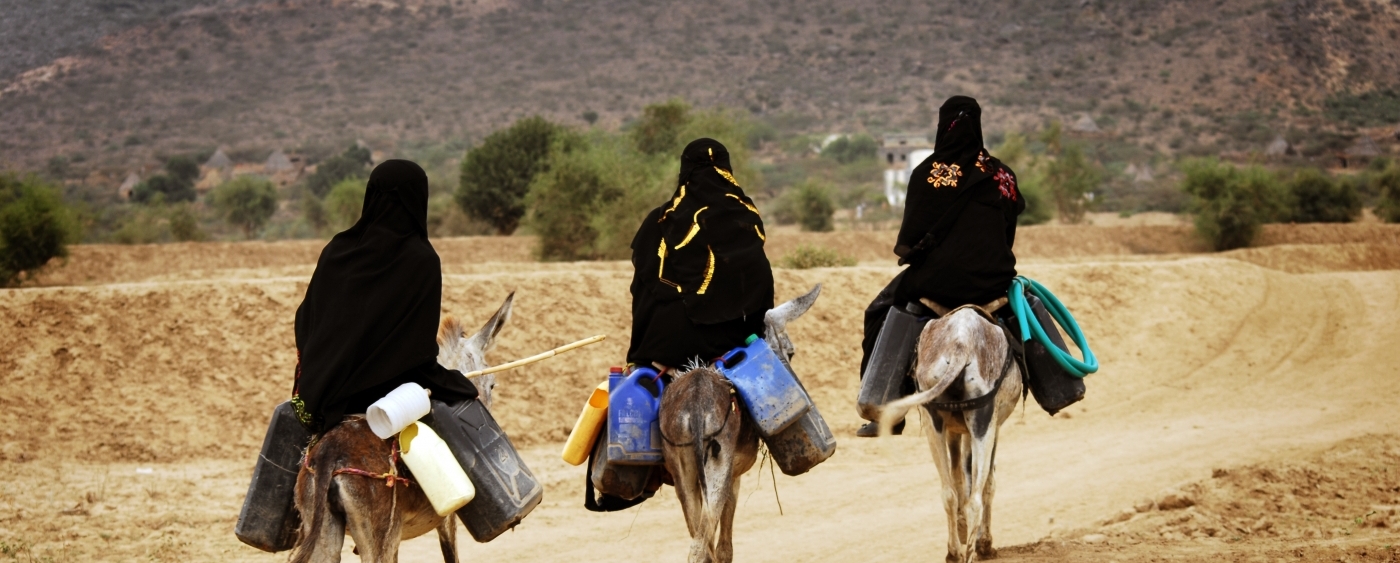Joint INGOs Message – Yemen Pledging Conference, 26 February 2019
Published 26th February 2019
Since the escalation of conflict in Yemen almost four years ago, the humanitarian needs have increased drastically, with an estimated 24 million people or 80% of the population in need of some form of humanitarian assistance in 2019. [1] This figure represents an increase of 2 million people or 10% in just12 months contributed to by an almost total collapse of Yemen’s economy, conflict across the country, violations of international law, as well as increased destruction of civilian infrastructure, notably schools and hospitals, and denial of access to basic services which in turns contribute to deaths by preventable diseases and significant increases in the number of displaced families and in gender-based violence.
Today, Yemen is closer to famine than ever before. A total of 15.9 million people, over 50% of the population, are severely food insecure, despite ongoing humanitarian food assistance. [2] Current estimates show that around a quarter of a million people are living in famine-like conditions. [3]
- The number of internally displaced people has reached 3.3 million, 76% of whom are women and children, and this number is expected to increase to 3.9 million in 2019. [4]
- 7 million people are malnourished, including 2 million children making it one child in five, [5] and more than 1 million pregnant and lactating women. [6]
- 400,000 children under five years old suffer from severe acute malnutrition (SAM) and an estimated 85,000 children might have already died [7] from malnutrition or other treatable diseases since the beginning of the conflict.
- 16 million people are in need of WASH assistance and basic health care.
- 4.1 million children are out of school or in need of educational assistance.
- 3 million Yemeni women and girls are at risk of gender-based violence [8] and the rate of forced and early marriage of girls has tripled since 2015. [9]
- The UN estimates that there are 7.5 million Yemenis that humanitarian partners do not have regular access to. [10]
We, both national and international humanitarian organisations in Yemen are working tirelessly to address these needs despite security concerns, access restrictions and other bureaucratic impediments. Collectively we are working in 19 governorates and each year we reach millions of people, including women and children. Yet we are constantly confronted by the scale of human suffering and we struggle to deliver at such a large scale when so many people are in dire need of assistance.
As we approach the 2019 High-Level Pledging Event for Yemen, in addition to requesting adequate levels of funding to implement the UN Yemen Humanitarian Response Plan for this year, we urge donors to:
- Ensure a broad representation of donors contribute generously to funding the Humanitarian Response Plan in order to guarantee a principled and accountable response. It is critical to have a more inclusive group of donors at the table where decisions on Yemen’s humanitarianresponse are being made.
- Reconsider the modality and conditionality of funding, including the need for increased flexibility and long-term funding, to enable humanitarian organisations to better respond to this humanitarian crisis while navigating prohibitive bureaucratic impediments and security challenges.
- Increase funding to specific sectors such as protection, reproductive health and mental health and psychosocial support services, gender-based violence services and education. Investing in these sectors is likely to reduce the long-term damaging impact of the conflict on the Yemeni population, particularly women and children.
- Invest in early recovery and development in areas that are not directly affected by the conflict to strengthen the resilience of the Yemeni people, allowing them to recover their livelihoods and resume their lives. In addition to the focus on conflict affected areas, donors need to think creatively about supporting other parts of the country which may be less affected by the conflict but are also experiencing insecurity, political instability, weak governance and poor access to resources and services.
- Use their leverage with national authorities in Sana’a and Aden to negotiate access andremove conditionalities imposed on the humanitarian community. While access constraints have been challenging, NGOs have been able to deliver and save many lives across large parts of the country, and remain the main implementers on the ground. Donors must not stop funding us because of access challenges but rather we need your support to overcome these obstacles and that is why we report them.
As international organisations working in the field we believe that money alone is not the solution for the Yemen crisis, which has been described as the ‘worst humanitarian crisis of our time’. Above all,we urge the donors and the international community to support measures that protect Yemeni civilians, demand accountability for violations and disregard for the laws of war, along with peace negotiations and pressure their allies to find a peaceful political solution to the conflict in Yemen.Whilst only peace can end the suffering of the Yemeni people, humanitarian assistance must not be contingent on the peace process. The road to peace in Yemen is long with many steps ahead, but people are suffering now. Humanitarian and early recovery assistance will still be required for years to come to recover the damage that has been done during the years of war, and the international community must not lose any time to continue to sustainably and comprehensively address the needs of the Yemeni people.
[1] UN ‘ Overview of the Humanitarian Needs in Yemen’
[2] Yemen: Acute Food Insecurity Situation December 2018 – January 2019, available at: http://www.ipcinfo.org/ipc-country-analysis/details-map/en/c/115185
[3] This means they are in IPC category 5.
[4] https://reliefweb.int/sites/reliefweb.int/files/resources/GHO2019.pdf5 Nutrition Cluster Data
[6] https://reliefweb.int/sites/reliefweb.int/files/resources/GHO2019.pdf
[7] Save PR
[8] UNFPA Humanitarian Response Plan in Yemen 2018, available at:
https://yemen.unfpa.org/sites/default/files/pub- pdf/UNFPA%20Yemen%202018%20Respone%20brochure%20-%20English%20- %20printed%20final.compressed.pdf
[9] Female respondents aged 15 to 49 years in six governorates. UNICEF, Falling through the cracks. The Children of Yemen, 2017.
[10] Famine Action Mechanism Workshop, Amman, January 24, 2019.
